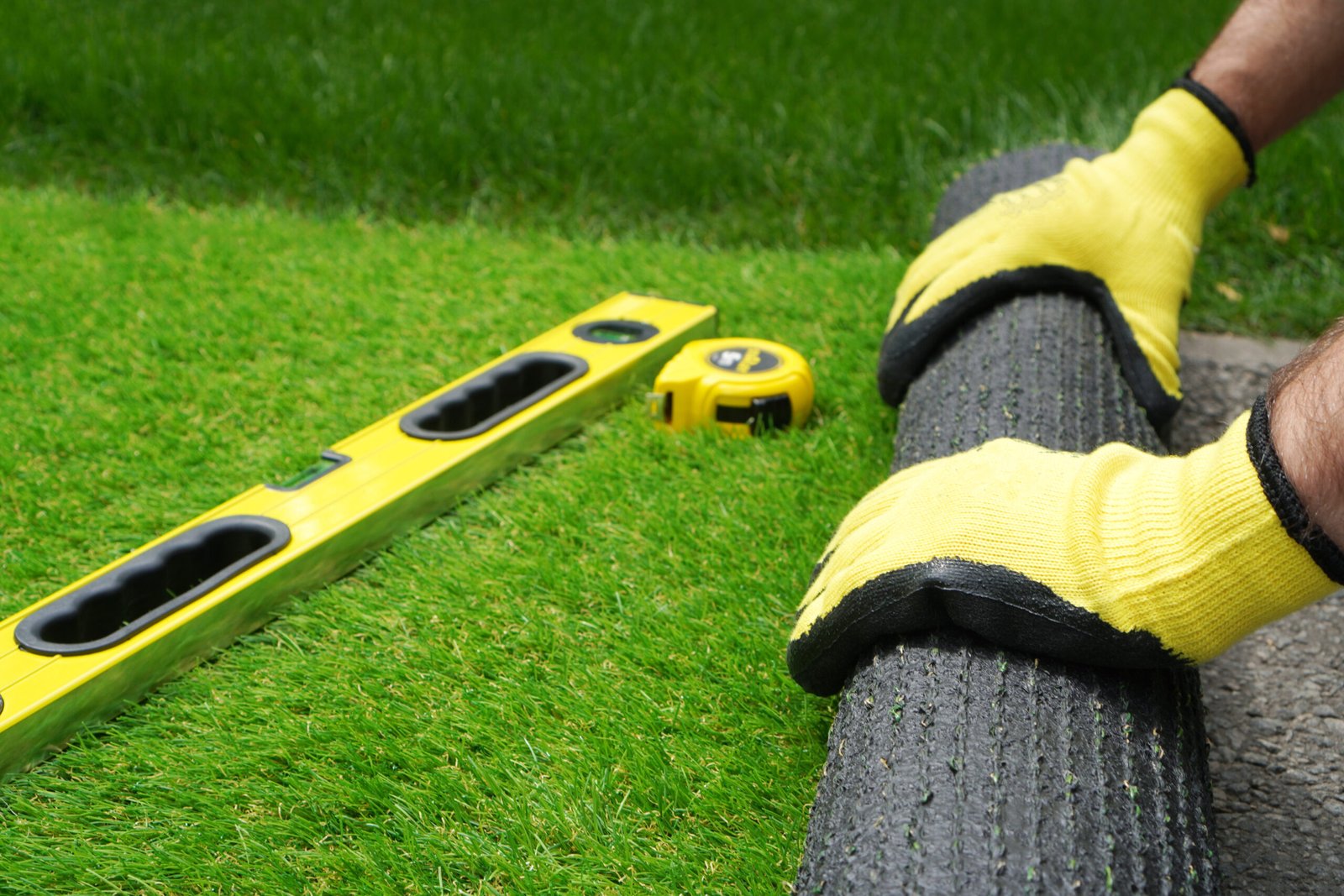Key Takeaways
- Comprehensive Guide: In-depth exploration of artificial grass installation, from pre-installation to maintenance.
- Benefits Highlighted: Understand the advantages of choosing synthetic turf for your spaces.
- Installation Tips: Step-by-step guidance on proper installation techniques to ensure durability and aesthetics.
- Maintenance Insights: Effective care and cleaning tips to maintain the pristine condition of artificial grass.
Introduction to Artificial Grass Installation
The installation of artificial grass is gaining popularity among homeowners and businesses seeking landscape solutions that are both low in maintenance and visually attractive. Unlike natural grass, synthetic turf requires no watering, mowing, or pesticide treatments, making it an environmentally friendly and cost-effective option.
Importance of Proper Installation
Synthetic turf’s success and longevity largely depend on its installation’s quality. Proper installation ensures the artificial grass is secure, visually appealing, and durable. Missteps during installation can lead to uneven surfaces, poor drainage, and quicker material degradation.
Benefits of Synthetic Turf
Choosing synthetic turf offers a range of advantages, contributing to its growing popularity among homeowners and businesses. One of the most significant advantages is its suitability for drought-prone areas. Sustaining a natural lawn can be impractical and environmentally unsound in areas plagued by water shortages. Synthetic turf requires no watering, conserving precious water resources and reducing water bills, offering considerable savings over time.
Additionally, artificial grass remains lush and visually appealing throughout the year, regardless of weather conditions. This contrasts natural lawns, which can turn brown and patchy during low rainfall or extreme temperatures. Maintaining a green aesthetic without constant watering or weather-dependent care makes synthetic turf ideal for keeping landscapes beautiful in challenging climates.
Furthermore, synthetic turf is a safer alternative for families, particularly those with children and pets. It removes the necessity for chemical treatments like fertilizers and pesticides, commonly employed to preserve the health and look of natural grass. These chemicals can pose health risks, particularly to children and pets who spend much time in yard areas. By reducing exposure to these harmful chemicals, artificial grass provides a safer, toxin-free environment for families to enjoy outdoor activities. This aspect especially appeals to those concerned with the long-term health implications of regular exposure to garden chemicals used in traditional lawn care.
Pre-Installation Steps
Before installing artificial grass, several preparatory steps must be undertaken to ensure a successful outcome. This involves the removal of existing natural grass or other materials, capping off sprinkler systems to prevent water wastage, and relocating any wiring or electrical components to avoid damage. These actions, including capping sprinklers and strategically relocating wiring, facilitate a seamless installation process.
Base Preparation
Preparing the base for artificial grass is crucial for stability and drainage. The process involves clearing the area of debris and ensuring the base is compacted correctly to prevent any shifting or sinking. Installing the Bender Board around the perimeter is also a critical step, as it helps define and separate the turf from other garden areas, providing a neat and organized look.
Turf Installation Process
The installation of the turf itself requires precision and attention to detail. Custom-fitting the turf to match the specific dimensions of the area ensures there are no gaps or overlaps, which are crucial for aesthetics and functionality. Properly securing and tucking the edges ensures the turf is safe and presents well. Applying filler, such as sand or rubber granules, helps keep the grass blades upright and adds to the natural look.
Maintenance and Care Tips
Maintaining artificial grass is simple but necessary to preserve its appearance and longevity. Regular cleaning routines are crucial; they involve the removal of leaves, twigs, and other debris that can gather on the surface. Such debris not only detracts from the visual appeal of the turf but can also impede drainage and cause the fibers to break down more quickly.
Occasional rinsing is another key maintenance aspect, especially in areas with low rainfall. Rinsing helps wash away dust and pollen that can accumulate within the fibers, ensuring the turf retains its vibrant color and does not become a breeding ground for allergens. Specific cleaning agents designed for synthetic turf can be used for more stubborn stains, such as those from pet waste or spilled substances. These cleaners are formulated to be gentle on the artificial fibers while effectively breaking down contaminants without harming the environment.
Moreover, brushing the turf regularly with a synthetic brush can help keep the blades upright and prevent matting. This is particularly important in high-traffic areas, where the constant pressure can flatten the turf. Adhering to these maintenance guidelines will help prolong the lifespan of your artificial grass and keep it a safe, appealing area for outdoor activities. These practices are crucial not only for aesthetic purposes but also to enhance the durability and functionality of the installation, ensuring optimal performance year-round.
Environmental Impact
While synthetic turf is often praised for its low maintenance and long-lasting qualities, it is also important to consider its environmental impact. Synthetic turf doesn’t require watering, mowing, or chemical treatments, significantly reducing water use and eliminating the emissions associated with lawn maintenance equipment. However, artificial grass production frequently uses non-biodegradable materials like plastic and rubber, which can lead to landfill waste once they reach the end of their useful life.
Additionally, the process of manufacturing synthetic turf can be resource-intensive, involving the use of petroleum products and other chemicals. These factors may offset some environmental benefits during the product’s lifecycle. Moreover, artificial turf surfaces can get significantly hotter than natural grass, potentially contributing to local heat increases in urban areas, known as the “heat island” effect.
To mitigate these impacts, manufacturers increasingly focus on innovations such as using recycled materials in turf production and developing eco-friendly alternatives for infill materials. Consumers are encouraged to consider the total environmental cost of synthetic turf, including its manufacture, maintenance, and disposal, to make a more informed decision regarding its use in their landscapes.

